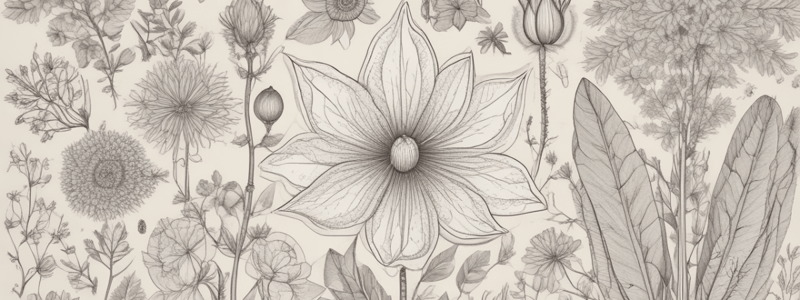Podcast
Questions and Answers
Pollen sticks to this ______.
Pollen sticks to this ______.
stigma
Where the seeds grow is the ______.
Where the seeds grow is the ______.
ovary
These ______ attract insects.
These ______ attract insects.
petals
The ______ is the male part of the flower.
The ______ is the male part of the flower.
Where the pollen is made is the ______.
Where the pollen is made is the ______.
The ______ attract insects to the flower.
The ______ attract insects to the flower.
These ______ protect the flower before it opens.
These ______ protect the flower before it opens.
Pollen is made in the ______.
Pollen is made in the ______.
Insects carry ______ from flower to flower.
Insects carry ______ from flower to flower.
The ______ is where the seeds will grow after fertilization.
The ______ is where the seeds will grow after fertilization.
Flashcards are hidden until you start studying
Study Notes
Flower Structure
- The male part of the flower consists of the stamen, which is made up of the anther and filaments.
- The anther is the part of the stamen where pollen is produced.
- The female part of the flower is the stigma, which receives pollen during fertilization.
Pollination
- Insects are attracted to flowers by the petals.
- Insects carry pollen from flower to flower, facilitating pollination.
- Pollen sticks to the stigma, allowing for fertilization to occur.
Flower Development
- Sepals protect the flower before it opens.
- Ovules are located in the ovary and become seeds after fertilization.
- The ovary is where seeds will grow after fertilization.
Studying That Suits You
Use AI to generate personalized quizzes and flashcards to suit your learning preferences.




